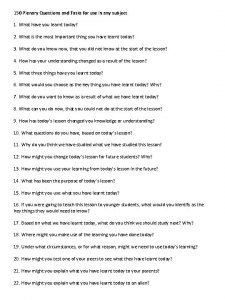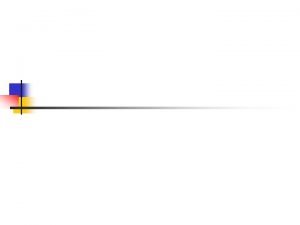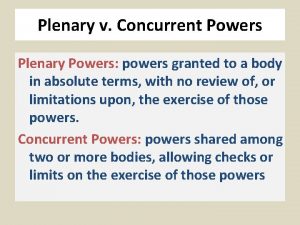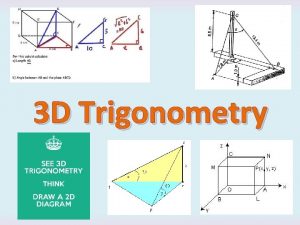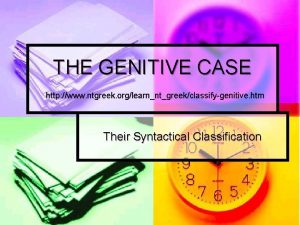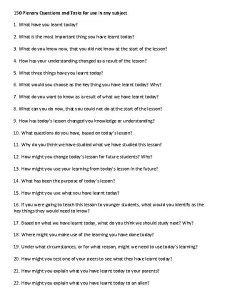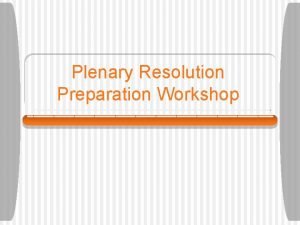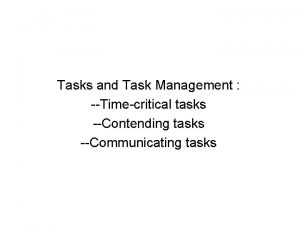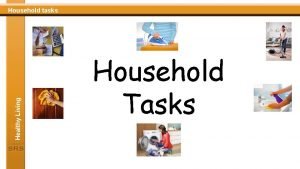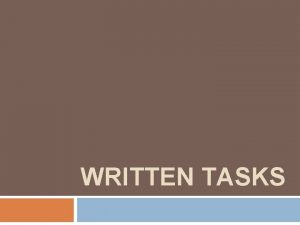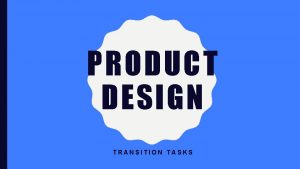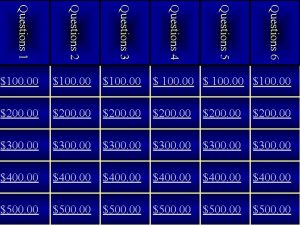150 Plenary Questions and Tasks for use in









- Slides: 9

150 Plenary Questions and Tasks for use in any subject 1. What have you learnt today? 2. What is the most important thing you have learnt today? 3. What do you know now, that you did not know at the start of the lesson? 4. How has your understanding changed as a result of the lesson? 5. What three things have you learnt today? 6. What would you choose as the key thing you have learnt today? Why? 7. What do you want to know as a result of what we have learnt today? 8. What can you do now, that you could not do at the start of the lesson? 9. How has today’s lesson changed you knowledge or understanding? 10. What questions do you have, based on today’s lesson? 11. Why do you think we have studied what we have studied this lesson? 12. How might you change today’s lesson for future students? Why? 13. How might you use your learning from today’s lesson in the future? 14. What has been the purpose of today’s lesson? 15. How might you use what you have learnt today? 16. If you were going to teach this lesson to younger students, what would you identify as the key things they would need to know? 17. Based on what we have learnt today, what do you think we should study next? Why? 18. Where might you make use of the learning you have done today? 19. Under what circumstances, or for what reason, might we need to use today’s learning? 20. How might you test one of your peers to see what they have learnt today? 21. How might you explain what you have learnt today to your parents? 22. How might you explain what you have learnt today to an alien?

23. How might you explain what you have learnt today to someone younger than yourself? 24. What connections can you make between today’s learning and what we have studied previously? 25. How does today’s learning connect to what you already know? 26. How might today’s lesson have been different? What might have been the result of this? 27. How might we have learnt the same things, but in a different way? 28. Who might use what we have learnt today in their daily lives? 29. How have you worked today? Why? 30. How might you improve your learning next lesson? 31. What have been the strengths and weaknesses of this lesson? 32. What skills have you used during this lesson? 33. What skills have you improved during the lesson? How have you improved them? 34. What knowledge have you gained this lesson? 35. How might you use the knowledge you have gained in this lesson in the future? 36. How have you interacted with your peers during this lesson? 37. What strengths and weaknesses have you seen in yourself this lesson? 38. What changes might you make next lesson to how you work? 39. How has today’s lesson made you feel? 40. To what extent do you feel you have engaged with the lesson today? Why? 41. To what extent do you feel you have learnt in today’s lesson? Why? 42. How have you learnt this lesson? 43. In what way(s) has your mind been changed by today’s lesson? 44. If you were to go back in time and start today’s lesson again, what would you change and why? 45. How could you have done things differently this lesson? What affect might this have had?

46. How did you feel at the beginning, middle and end of the lesson? 47. How have you used you existing skills and knowledge in today’s lesson? 48. What have you done well this lesson and why? 49. Write a poem about what you have learnt today 50. Create a short story based on today’s lesson 51. Write a set of five questions based on today’s lesson and then use them to interview you partner 52. Draw a picture showing what you have learnt today 53. Draw a cartoon strip showing what you have learnt today 54. Draw a cartoon strip showing how you will use today’s learning in the future 55. Write a letter to one of next year’s students explaining what today’s lesson is about 56. Write a speech persuading people that we have learnt today is important 57. Produce five key points which sum up today’s learning 58. Create a mind-map showing what we have learnt today 59. Create a set of instructions for today’s lesson which anybody could follow 60. How might you combine today’s learning with something else you already know? 61. What existing skills or knowledge could you combine today’s learning with? 62. Write a song or rap about what we have learnt today 63. Create a poster advertising today’s learning to other students 64. Create a television advert ‘selling’ today’s learning 65. Create a radio advert ‘selling’ today’s learning 66. Create a quiz, based on today’s learning, which you could use to test other students 67. Explain what we have learnt today without using words 68. Create a short presentation explaining the key points from today’s lesson

69. Create a leaflet about what you have learnt today 70. Write a letter to a person in the nineteenth-century explaining what you have learnt today 71. Write a message to an alien explaining what you have learnt today 72. Use symbols to show what you have learnt today 73. Make a model of one aspect of your learning 74. Sculpt one of the key ideas from today’s lesson 75. Construct a timeline showing your learning through the lesson 76. Swap your work with a partner and assess it: What have they done well? How might they improve? 77. Assess your own work: What have you done well? How might you improve? 78. What strengths have you shown in today’s lesson? What areas for improvement can you find? 79. Find a partner who you don’t often work with. Swap your work and do a peer-assessment. Identify three strengths and one target for improvement. 80. What is the most important thing we have learnt over the past few lessons and why? 81. Write down all the things we have learnt today. Once you have done this, order them according to how important you believe them to be. 82. How would you have taught today’s lesson and why? 83. What difficulties have you encountered today? How have you dealt with them? 84. What difficulties might a student encounter if they were new to today’s topic? 85. Assess your learning using the learning objective: Have you met? How? If not, what do you still need to do in order to meet it? 86. What evidence do you have showing what you have learnt today? 87. What key question would you ask to find out whether someone has understood today’s lesson? 88. Write an exam-style question and mark-scheme based on today’s lesson

89. Write three key questions you think people in the class should be able to answer, based on today’s lesson. When ready, walk round ask people your questions. 90. Identify the key learning points from today’s lesson 91. Compare what you know with what you knew at the start of the lesson. How is it different? 92. Write a quiz based on today’s lesson. Make sure you cover all areas. When you are ready, test your partner. 93. What different possibilities can you imagine for next lesson, bearing in mind what we have learnt today? 94. Pick one thing you have done today and identify how you could do it better 95. Pick one thing you have done today identify why it was good and how it helped you 96. How useful is what we have learnt today? Why? 97. Write what you have learnt today on a piece of paper and hand it in on your way out 98. If you feel you have fully understood the lesson, give a ‘thumbs up’. If you feel you have understood most of it, turn your thumbs sideways. If you feel you have struggled to understand it, give a ‘thumbs down’. 99. Think about today’s lesson. Give yourself a score between 1 and 5. 1 = I have really struggled and need more help. 5 = I have understood nearly everything and could explain to others. Once you have done this, find someone with a different score. Either ask them for help, or offer them help. 100. Write down the questions you still have about the topic, and which you do not feel have been answered yet. 101. What criteria would you use to judge whether someone has fully understood the lesson today? 102. How does today’s lesson connect to your existing knowledge? 103. How does today’s lesson connect to our previous areas of study? 104. How might today’s lesson connect to other areas of the curriculum? 105. Write down what you think is the most important thing you have learnt today, and then hold it up for everyone to see

106. Draw a line and label it from one (no idea) to ten (completely understand). Indicate where you feel you were at regarding the topic when the lesson began, and where you feel you are at now. Then, explain your choices. 107. Work in a group of three or four to create a freeze-frame showing the key thing you have learnt today 108. Work in pairs. Take it in turns to mime key ideas and information from the lesson. The other person has to guess what is being mimed. 109. Create a short role-play in which someone’s life is changed through learning what we have learnt today 110. Create a pair of still images showing life before and after what we have learnt today 111. Work in groups. Create a role-play showing what life would be like if no one knew about what we have learnt today. 112. Work in pairs. Create a thirty-second sales pitch for today’s learning which could be used on a television shopping channel. 113. Work in pairs. One person is the interviewer. The other person has had their life changed by what we have learnt today. Conduct an interview for the BBC news using these roles. 114. Work in groups of three or five. One person is the chairperson. The rest split between for and against. The motion is: ‘Today we have learnt some incredibly important things’. The debaters must argue the point while the chairperson referees. 115. Work in pairs. Each person, in secret, chooses an emotion. Next, conduct a discussion about what we have learnt today, while playing that emotion. When the teacher says, continue the discussion but swap your emotions. 116. Work in groups. Turn today’s lesson into a dramatic story. One person reads the story aloud while the rest of the group act it out. 117. Write a postcard to a friend explaining what you have learnt this lesson. Draw a picture for the front showing what you have learnt. 118. Write a text message explaining what you have learnt this lesson 119. Choose three keywords we have used this lesson. Write a definition for each and then give an example.

120. Choose one thing you have done this lesson and redo it so that it is better 121. Plan your own lesson covering what we have studied today 122. Compare what you have learnt this lesson with what you learnt last lesson. How is it similar? How is it different? 123. Write a list of what you have learnt today. Give examples for each item so as to show your understanding. 124. Produce a summary of what you have learnt today. When done, rewrite it using fewer words. After that, reduce it to either a single sentence, or three bullet points. 125. In pairs, discuss what you have learnt this lesson. Be ready to share your thoughts. 126. In pairs, assess your work. Take it in turns to go through and identify the strengths and one area for improvement in your work, and in that of your partner. 127. In pairs, take it in turns to interview one another about today’s lesson. Take notes as you go. 128. In pairs, produce a list of key words and definitions which link to today’s lesson. Then, jumble them up and challenge another pair to match the correct word to the correct definition. 129. In pairs, discuss how you think what we have learnt today is used in the wider world. Be ready to feed back to the whole class. 130. In groups of three or four, take it in turns to try and talk for a minute about today’s topic without pausing or repeating yourself. 131. In pairs, one person is ‘for’ and one person is ‘against’. The motion is: ‘What we have learnt today is extremely important. ’ The people ‘for’ will go first, for a minute. The people ‘against’ will get a minute after that. Finally, there will be a minute of free-for-all, where both sides can speak. 132. Take it in turns to draw something connected to today’s lesson. The other person must try to guess what it is. The drawer is not allowed to talk, or to write any words. 133. In groups of three or four, discuss what you have learnt this lesson. Appoint one person as the leader. It will be their job to share your group’s ideas with the rest of the class. 134. In groups of three or four, identify what you think are three most important things we have learnt today. Elect one representative. They will travel to other groups and try to persuade them of your views.

135. In groups of three or four, produce a role-play based on something we have learnt today. 136. Write a possible exam question based on today’s learning. Swap books with a partner and attempt their question. 137. Write a possible exam question based on today’s learning. Then, write a model answer. 138. Write a series of multiple choice questions based on today’s learning. Swap books with a partner and attempt their questions. 139. Draw between three and five key concepts or ideas linked to today’s lesson. Do not label them. Swap books with a partner and try to identify what the concepts or ideas are. 140. Write three possible exam questions based on today’s learning. Walk around the room and ask your questions to other students. Discuss their answers with them. 141. In groups of three or four, write a short summary of everything we have learnt today. Produce a series of appropriate actions to go with your summary. One person will read the summary out to the class while the rest of your group do the actions. 142. Write a question, based on today’s topic, with which you think you can beat the teacher. 143. How might you translate today’s lesson into a graph? 144. How might you explain what we have learnt today using symbols? 145. How might you express what you have learnt today using your body? 146. What do you feel you have got from today’s lesson? 147. What would you like us to study next and why? 148. Why might people have decided that it is important for young people to know about what we have studied in today’s lesson? 149. Where might you use today’s learning in the next month? 150. How would you describe your experience of today’s lesson using colours and shapes?

Ways in which you might use the plenary material: • Transfer a question or task to a Power. Point or Interactive Whiteboard slideshow. • Keep the sheets on hand in your classroom and select questions or tasks which suit the flow of the lesson. • Invite a student to select a number between 1 and 150. Use the corresponding task or question as your plenary. • Create a grid of 150 numbered squares. Invite students to throw a counter onto the grid. The number on which the counter lands is the plenary. • Create a collection of slips of paper number 1 – 150. Place these in a bag, hat or container. Invite a student to select a slip at random. The number on the slip is the plenary for that lesson. • Photocopy and laminate the sheets. Stick them on your classroom wall. Invite a student or group of students to look through the sheets and to pick out a plenary with which they would like to end the lesson. • Photocopy and laminate the sheets. Stick them on your classroom wall. Cross off each plenary you use with your classes. Work through the sheets until you have tried all the plenaries. • Create a subset of the above questions. Type these into Microsoft Word so that you have one per page in a large font. Print these off and bind them into a plenary question-booklet. You can then show your class a series of questions (or ask a student to do it) at the end of a lesson. • Divide the questions and tasks into 15 groups (1 -10; 11 -20 and so on). Invite a student to select a group and then invite a second student to select a plenary from within that group. For example, the first student might select group 7 (61 -70) and the second student might select plenary number 68. • Divide your class into groups. Invite each group to choose a different plenary. Conclude the activity by having the groups share their answers or responses.
